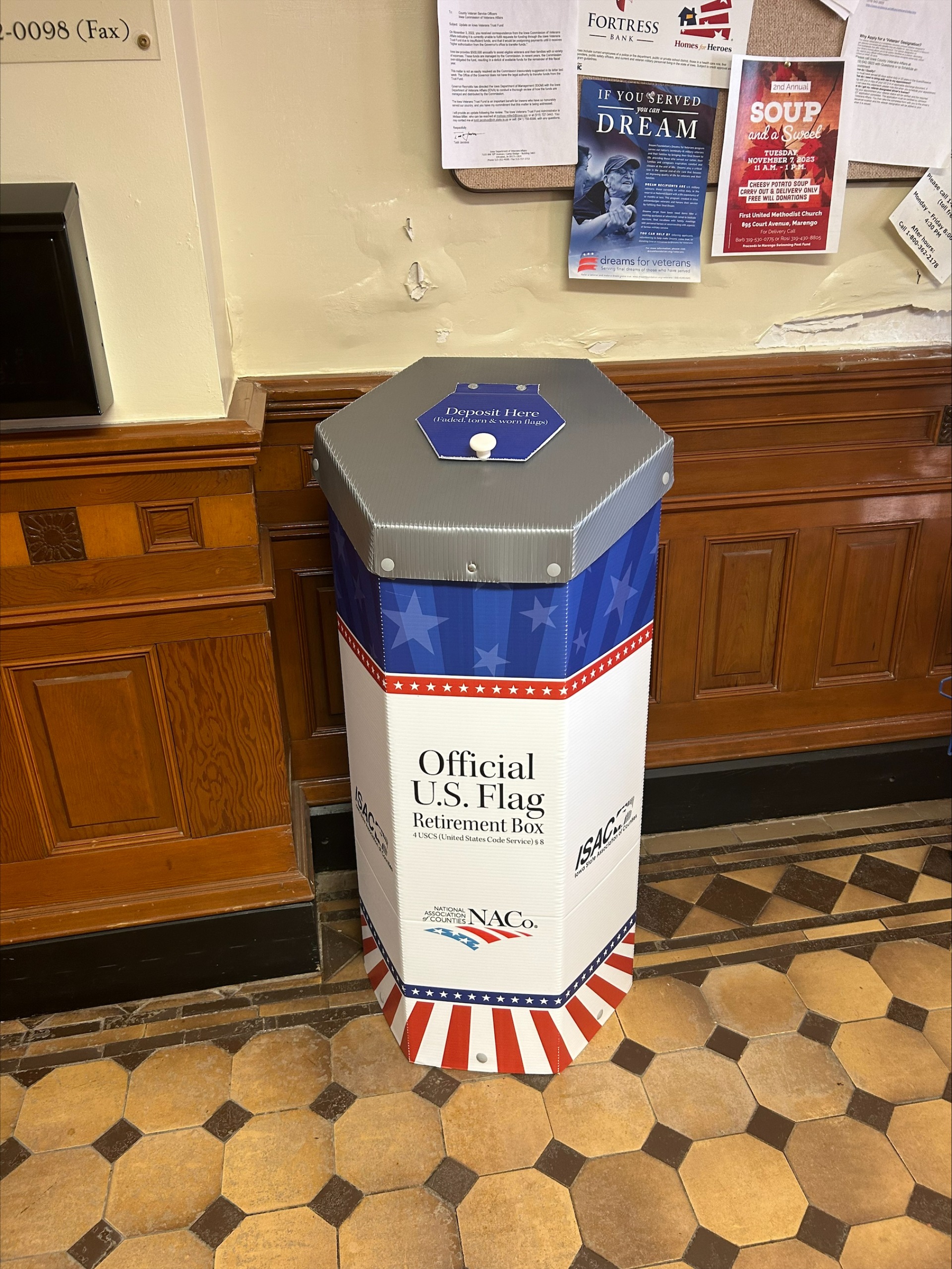Flag Resources
Flag Display Days
- New Year's Day
January 1 - Martin Luther King Day
3rd Monday in January - Lincoln's Birthday
February 12 - Presidents' Day
3rd Monday in February - Easter Sunday
Variable - Mother’s Day
2nd Sunday in May - Peace Officers Memorial Day (half-staff)
May 15 - Armed Forces Day
3rd Saturday in May - Memorial Day (half-staff 'til noon)
Last Monday in May - Flag Day
June 14 - Independence Day
July 4 - National Korean War Armistice Day (half-staff)
July 27 - Labor Day
1st Monday in September - POW/MIA Recognition Day
3rd Friday in September - Constitution Day (Citizenship Day):
September 17 - Columbus Day
2nd Monday in October - Navy Day
October 27 - Veterans Day
November 11 - Thanksgiving Day
4th Thursday in November - National Pearl Harbor Remembrance Day
December 7 - Christmas Day
December 25
Flag Disposal
 Many Americans proudly fly the U.S. flag at their homes and places of work, but what do you do with it when it's old and ratty and you're ready for a new one? Don't just throw it in the trash like any other old item – that's considered disrespectful. Just as there is etiquette for displaying Old Glory, there's also etiquette for disposing of flags in a dignified manner.
Many Americans proudly fly the U.S. flag at their homes and places of work, but what do you do with it when it's old and ratty and you're ready for a new one? Don't just throw it in the trash like any other old item – that's considered disrespectful. Just as there is etiquette for displaying Old Glory, there's also etiquette for disposing of flags in a dignified manner.
Rules on how to properly fly the flag were established in June 1923, when the National Flag Conference met in Washington. Its members created the Flag Code, which states that "the flag represents a living country and is itself considered a living thing."
The American Legion passed a resolution about flag retirement ceremonies in 1937, and they've been an important ritual ever since. According to the resolution, "The approved method of disposing of unserviceable flags has long been that they be destroyed by burning." The U.S. flag is considered such a sacred symbol that burning it in an undignified manner constitutes desecration. That's why the ceremonies are held in a specific manner.

